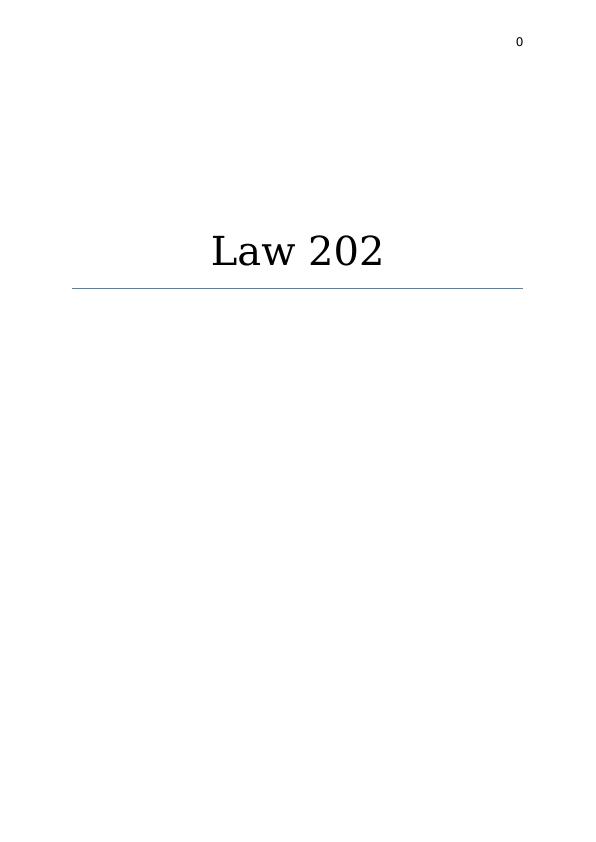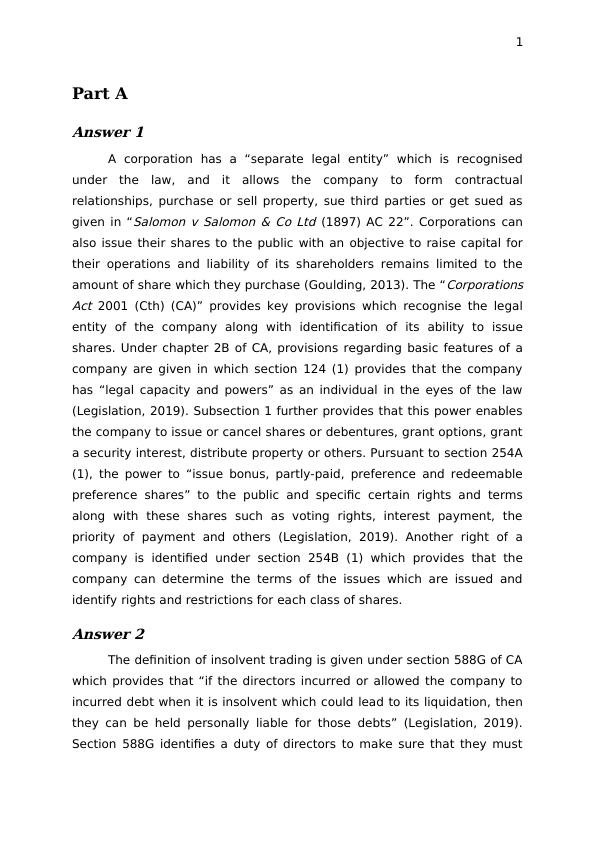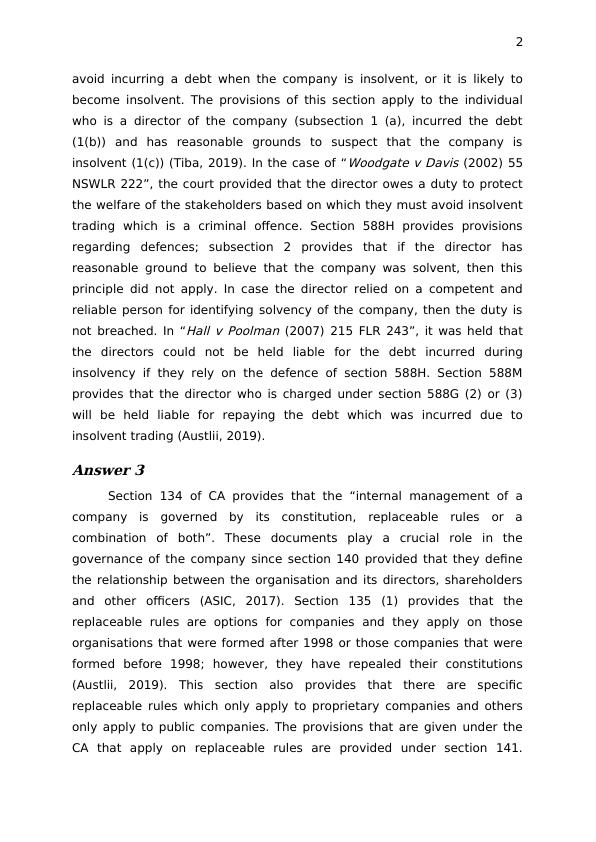Corporate Law: Legal Entity, Insolvent Trading, Internal Management, Remedies
9 Pages2724 Words70 Views
Added on 2022-11-28
About This Document
This document provides an overview of corporate law topics such as the legal entity of a corporation, the concept of insolvent trading, the role of the constitution in internal management, and the remedies available for shareholders. It also discusses the differences between a liquidator and an administrator in the winding up of a company.
Corporate Law: Legal Entity, Insolvent Trading, Internal Management, Remedies
Added on 2022-11-28
ShareRelated Documents
End of preview
Want to access all the pages? Upload your documents or become a member.
Safe Harbour Provisions and Director Duties
|20
|1911
|29
Corporations Law: Duties of Directors and Powers of Liquidator
|5
|1057
|440
Legal Actions Against Susan and Mary for Violation of Corporations Act
|8
|2192
|187
Corporation Law
|5
|742
|173
Is Gino under the breach of directors duty for prevention of insolvent trading under section 588G of corporation Act, 2001?
|5
|579
|56
Action by Liquidator against Directors for Breach of Duties under Section 588G of Corporations Act
|5
|1066
|229



